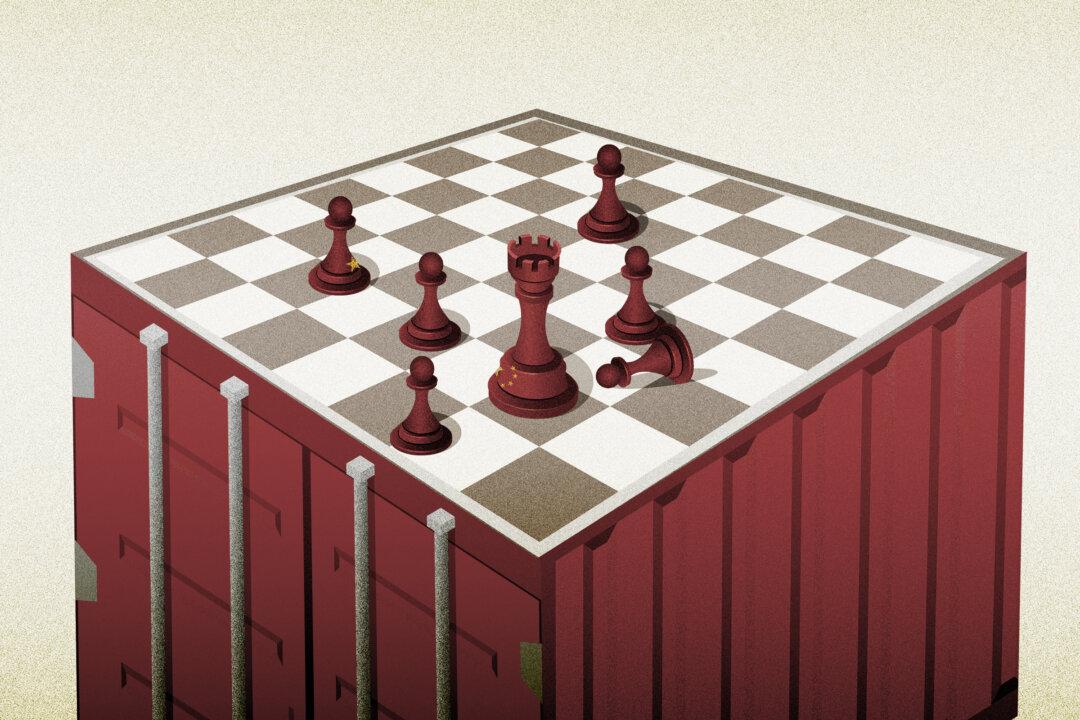WASHINGTON—Fears of the CCP virus have begun to take a larger economic toll than initially expected, as U.S. consumers and businesses have cut back sharply on spending.
Most analysts now expect the U.S. economy to contract sharply in the rest of March and throughout the second quarter due to the worsening pandemic.
The Epoch Times refers to the novel coronavirus, which causes the disease COVID-19, as the CCP virus because the Chinese Communist Party’s coverup and mismanagement allowed the virus to spread throughout China and create a global pandemic.
The disease and the measures taken in response are truly unprecedented events. There is no adequate historical example to precisely gauge the outbreak’s economic damage, posing a major challenge for analysts and policymakers.
The uncertainty surrounding the pandemic led to sharp sell-offs on Wall Street in the past few weeks, ending the longest bull-market expansion in history. The Dow Jones Industrial Average has fallen fell more than 9,000 points since its peak in February, losing 30 percent.
In response to the pandemic, major airlines have grounded most of their fleets, cruise lines have suspended their sailings, conferences have been called off, and restaurant reservations and hotel occupancies have fallen sharply in many cities throughout the United States.
Looking at any empty restaurant or coffee shop, it’s hard to deny the severity of the economic blow of COVID-19, according to Beth Ann Bovino, chief U.S. economist at Standard & Poor’s Ratings Services.
“While the economic data for March has not been released, social distancing is likely to lead to a steep drop in consumer spending, which will have knockdown effects on business investment,” she wrote in a report.
The economy’s outlook is also dimmed by the oil price hit on capital investments in energy infrastructure and expanded travel bans, she said.
“As a result, S&P Global Economics believes that the U.S. is entering recession—if not already in one.”
The credit rating company expects the gross domestic product (GDP) to contract by 1 percent in the first quarter and 6 percent in the second. This slump will be followed by a slow U-shaped recovery in the second half of the year. S&P Global predicts 3 percent and 5 percent year-over-year growth in third and fourth quarters.
According to Goldman Sachs, the U.S. economic activity will shrink in the remainder of March and throughout April, because of sharp spending drops primarily in travel, entertainment, and restaurant meals. The bank predicts an 80 percent decline in spending on sports and entertainment, and a 50 percent decline in hotel and restaurant spending, for example.
“Emerging supply chain disruptions and the recent tightening in financial conditions will likely add to the growth hit,” Jan Hatzius, chief economist at Goldman Sachs, wrote in a report.
Recovery After April
According to Goldman Sachs’ baseline assumptions, U.S. economic activity will start to recover after April, with the second half of the year seeing “strong sequential growth.”Accordingly, the GDP growth will be flat in the first quarter and contract sharply by 5 percent in the second quarter, according to the bank’s estimates. This slump would be followed by 3 percent and 4 percent growth rates in the third and fourth quarters, respectively. There will be further strong gains in early 2021, according to Goldman Sachs.
However, the uncertainty around these estimates is much higher than normal, Hatzius says.
The overall economic impact of the pandemic will depend on the extent to which social distancing and rising temperatures will reduce the number of cases, he wrote.
In addition, it also depends on “how quickly reduced infections will bring back everyday activities and how effective easier monetary and fiscal policy will be in providing support,” he added.
“We now have early evidence of the negative economic impact on China, and it has been far in excess of our initial projections,” Peter Hooper, global head of economic research at Deutsche Bank, wrote in a report.
In light of recent developments, he noted that there would be “a severe global recession occurring in the first half of 2020, with aggregate demand plunging in China in the first quarter and in the Euro area and the United States in the second quarter. The quarterly declines in GDP growth we anticipate substantially exceed anything previously recorded going back to at least World War II.”
‘Invisible Enemy’
When asked about whether the CCP virus was pushing the U.S. economy toward recession, President Donald Trump said, “It could be.”However, he said he would rather focus on knocking out the virus, calling it an “invisible enemy.”
“When we’re finished with the virus, we’ll win,” he said at a White House press briefing on March 17. “When that victory takes place, our economy is going to go through the roof.”
The president earlier warned that the CCP virus crisis could last until July or August.
The health crisis has provoked unprecedented monetary and fiscal policy responses around the world. The Federal Reserve has taken aggressive measures to reduce stress in financial markets. The central bank on the weekend has moved rates to zero in short order and injected a tremendous amount of liquidity into money and credit markets.
In an effort to combat the disease and minimize its financial impact, the White House and Congress have also been working around the clock to pass aid packages for people and companies affected by the CCP virus.
Treasury Secretary Steven Mnuchin said the economic activity would pick up as the United States confronts the virus.
“Let me just emphasize that this is a unique circumstance. This isn’t like the financial crisis where people didn’t know how long this was going to go on,” he said at a White House press briefing on March 14.
“We are committed to using all the tools and all the resources of the government to make sure that we protect the economy.”





